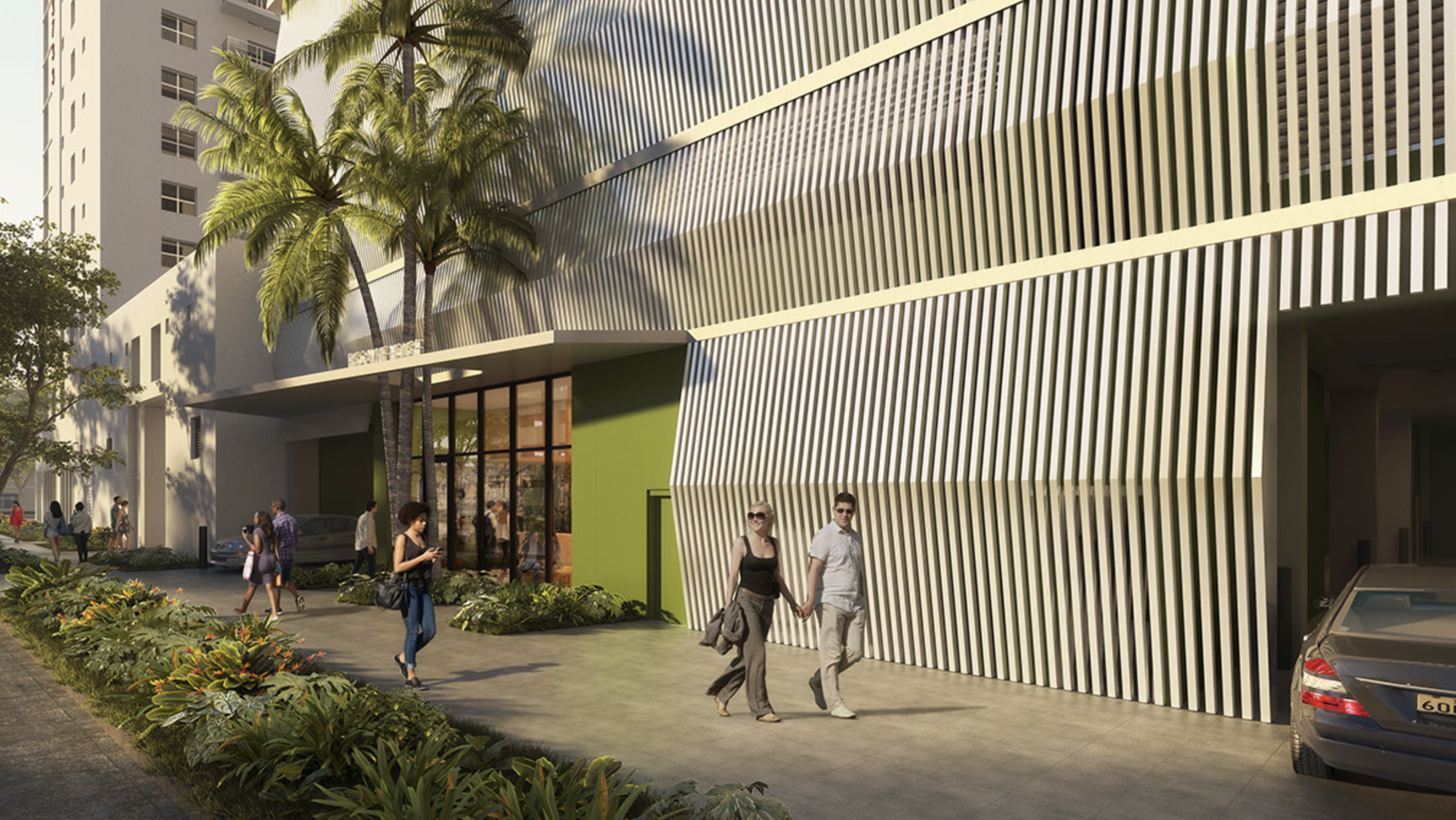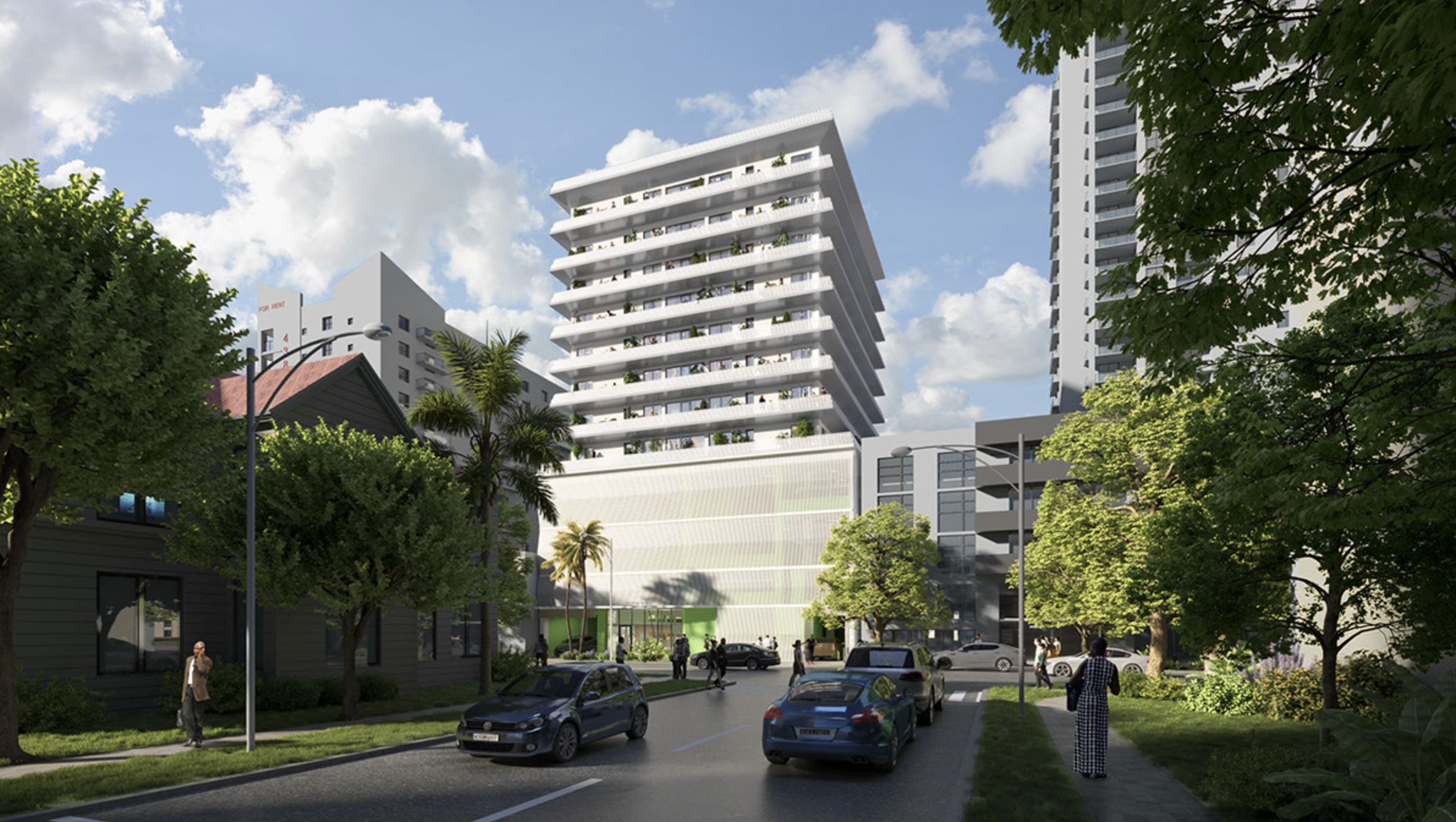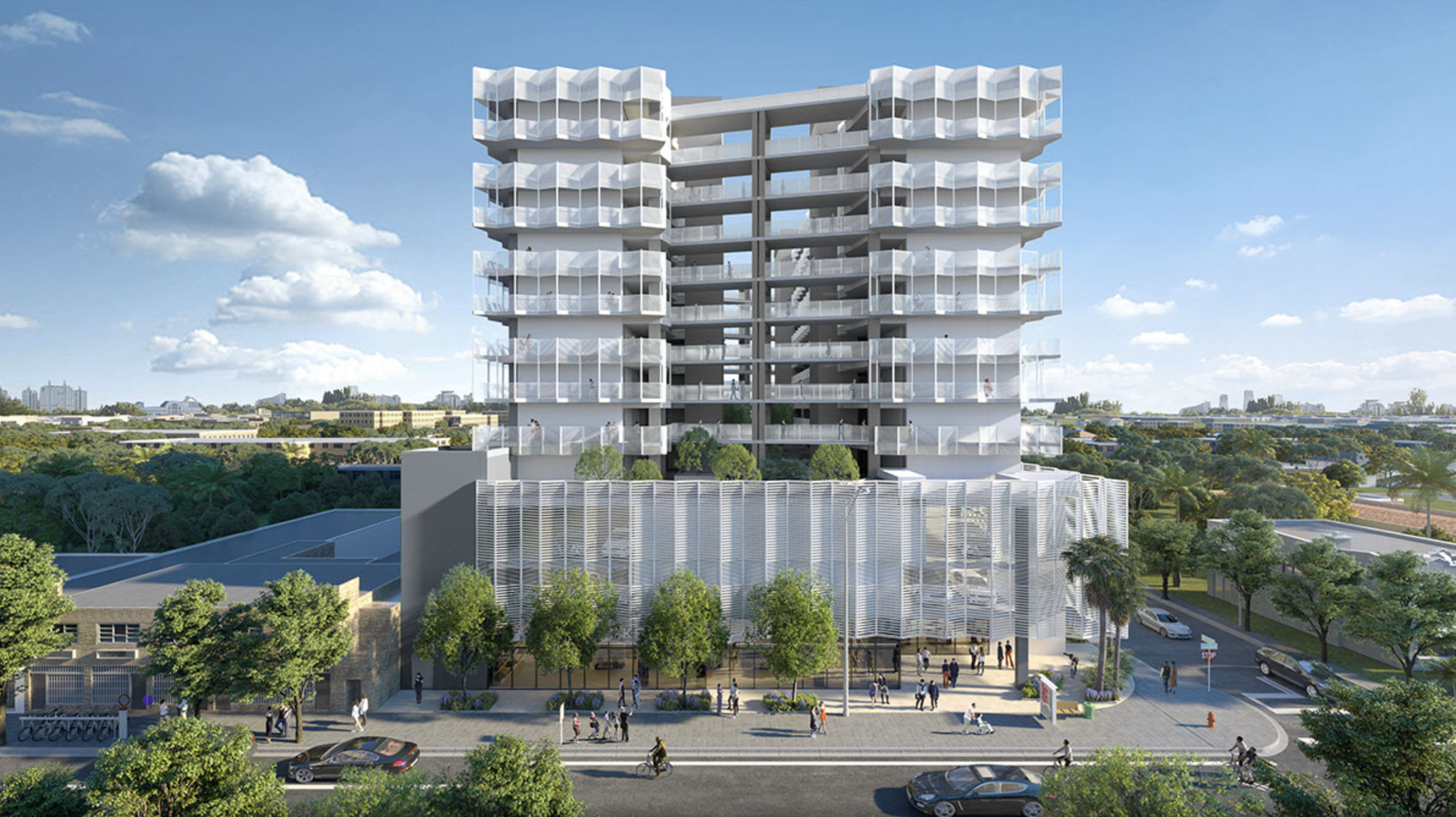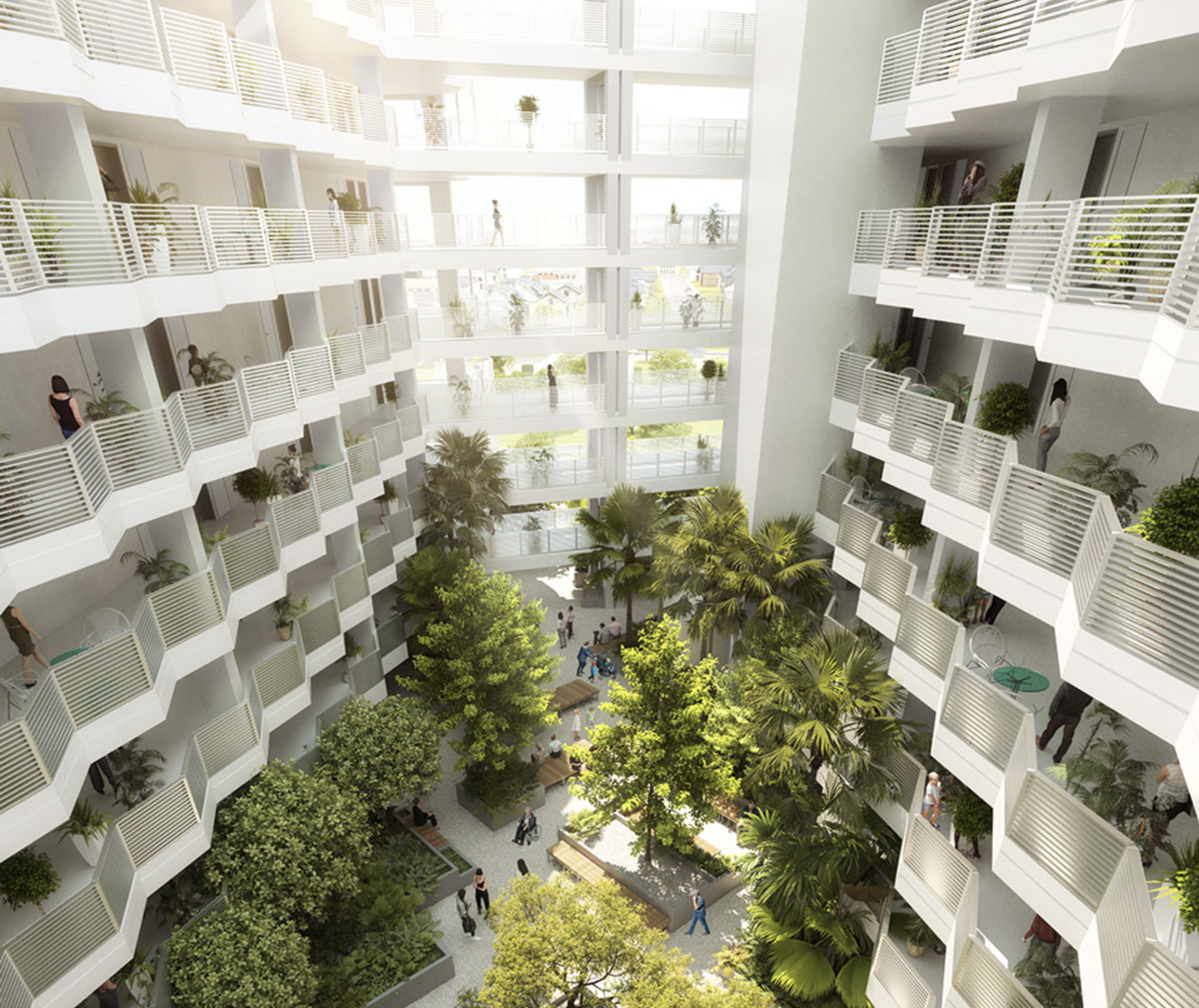
Images courtesy of Glavovic Studio

Audio By Carbonatix
Long before New York and San Francisco transplants flocked here during the pandemic, the rent in Miami was already too damn high. Miami residents were already considered the most rent-burdened in the country. Then, as if the housing crisis couldn’t get any worse, prices continued to soar 34 percent year-over-year in 2022.
While affordable homes seem evermore out of reach, two new housing projects slated for Edgewater and Little River are seeking to provide some much-needed relief to the city’s tenants.
Billed as Biscayne House and Little River Plaza, the sleek new buildings will offer a combined 323 studio and one-bedroom “micro-units” that will cost far less than Miami’s estimated median monthly rent of $2,670 for a one-bedroom apartment, says Margi Glavovic Nothard, Fort Lauderdale-based founder of the projects’ architecture firm, Glavovic Studio.
“The mandate is that no one pays more than 30 percent of their income,” Glavovic Nothard tells New Times, noting that families who spend more than that percentage on housing are considered cost-burdened under federal standards. “Our charge was to build these units to be affordable and desirable. We still have to pay the same price for concrete and labor and everything else, so you end up having to be quite responsible and thoughtful.”

A rendering of the Biscayne House exterior
Images courtesy of Glavovic Studio
The Healthy Housing Foundation, powered by the AIDS Healthcare Foundation, which owns the properties at 237 NE 24th Street and 279 NE 79th Street in Miami, hired Glavovic Studio to design the buildings for South Florida’s financially struggling residents. The studio’s past projects include Artspark at Young Circle in Hollywood and the Young at Art museum and library in Plantation.
Ebonni Chrispin, legislative affairs and community engagement director at the Healthy Housing Foundation, tells New Times that anyone who earns less than half of Miami-Dade County’s median income will qualify to live in either building.
“We want to show people that homes can be affordable and beautiful, and filled with people who work hard and do their thing every single day like everyone else but just happen not to be making $100,000 to $250,000 a year,” Chrispin says. “South Florida is not made of just tourists, visitors, or investors. It’s made up of people who have lived here for generations and generations, or who have moved here for work, and a lot of these folks cannot afford to live here anymore.”
As of April 2022, the county’s median income was listed at $68,300, which means any individual earning less than $34,150 a year could apply to live in either building once they are completed. Since tenants would not be expected to pay more than a third of their income, the units shouldn’t cost more than $949 a month. However, the Healthy Housing Foundation was unable to provide New Times with a monthly rental quote, saying the figure can not be calculated until the projects are closer to completion.
“We’re trying to develop a model that others can then adopt, demonstrating how we can do affordable housing more effectively, less expensive, and quicker,” Glavovic Nothard says. “Affordable housing is a resiliency and sustainability issue. A city is not sustainable without having housing that people can live in that is also desirable.”
Delays in the City of Miami’s regulatory approval process have slowed the projects’ progress, Glavovic Nothard says. Biscayne House has been in the county’s regulatory appeals process awaiting zoning and planning approvals and building permits for the past year. The project is now estimated to break ground in the summer of 2023.
The existing commercial building at the Little River site was demolished, and the Healthy Housing Foundation is awaiting Miami’s land entitlement review and a building permit. Little River Plaza is expected to break ground in the summer of 2024.
Once construction is underway, it would take an additional one to two years to complete each project.
“We are urging the city to move faster for affordable housing projects because they’re lagging,” Glavovic Nothard says. “Even though they’ve prioritized them, they still are taking too long for approvals.”

A rendering of Biscayne House at 237 NE 24th Street in Edgewater
Images courtesy of Glavovic Studio
The micro-units will be approximately 325 square feet for studio apartments and 550 square feet for one-bedroom apartments. They have been designed to save as much energy as possible with low-flow electrical fixtures and water-saving devices. “Beyond just saving the planet, it’s also critical because if your energy costs are stable and your monthly utility bill isn’t going up, you have higher housing security,” Glavovic Nothard says.
The units have also been designed with built-in furniture to keep move-in costs down. If all goes according to plan, once a tenant has been approved, they will not have to pay typical upfront leasing costs such as first and last months’ rent and a security deposit.
“Let’s say an apartment is $2,000. Most people aren’t walking around with $6,000 to be able to move into a place,” Chrispin explains. “We’re trying to shift the tide on how we essentially walk people into poverty.”

A rendering of Little River Plaza at 279 NE 79th Street in Little River
Images courtesy of Glavovic Studio
The 12-story Biscayne House will have 75 micro-units. Each one is expected to boast a balcony overlooking the city or Biscayne Bay. “We want to demonstrate that you don’t need to get rid of the quality of life, the ability to have a great view, close proximity to the water, and also to transit when designing affordable housing,” Glavovic Nothard says.
The 12-story Little River Plaza will have 248 studio and one-bedroom apartments. In an addition to an exterior-facing balcony, the units are set to overlook a lush, plant-filled atrium. “The interior courtyard is really fun and a green zone with all this indigenous landscape to bring more oxygen into the space,” Glavovic Nothard says. “It becomes a kind of meet and greet, where you can look from your balcony, and it just offers an alternative space for the resident that’s discreet and private to the residential community in this building.”

A rendering of the indoor courtyard at Little River Plaza
Images courtesy of Glavovic Studio
In late 2018, after the Healthy Housing Foundation revealed Glavovic Nothard’s design plans to build South River Plaza in Fort Lauderdale, more than 4,300 people signed an online petition against the project. The 15-story affordable housing building was slated to bring 501 units that would cost roughly $500 a month. A model unit boasted bright yellow cabinets, room for a refrigerator and burner stove, a couch, bed, bathroom, and balcony. Though the project was within six months of breaking ground, a sudden “zoning issue” brought up by the City of Fort Lauderdale Development Review Committee brought everything to a screeching halt, according to Chrispin.
Chrispin says the opposition “revealed all sorts of misconceptions from the community about people who are low income: that they are criminals, they need a host of services in order to function on a daily basis, [and] they would bother surrounding neighbors and neighborhoods.”
“I don’t have any doubt that the reason that we don’t have a property there to address the housing crisis is because people don’t want to see or experience low-income housing,” Chrispin says.
Since the Fort Lauderdale project fell through, South Florida’s housing crisis has become more dire. According to the Miami Workers Center, a group of Hialeah tenants was given less than a month to come up with an additional $600 tacked onto their $1,000-a-month rent. In Liberty City, rent for a stretch of apartments suddenly jumped to $1,700. And $500-a-month Little Haiti efficiencies started charging $900.
Given Miami-Dade County Mayor Daniella Levine Cava’s recent $85 million investment in affordable housing, Chrispin and Glavovic Nothard are confident history will not repeat itself in Biscayne House nor Little River Plaza.
“We really think it’s going to happen, that there’s no reason that it shouldn’t. It’s just a question of moving it forward,” Glavovic Nothard says. “As designers and architects, we respond to the challenges of the day, and housing affordability is such an important one.”